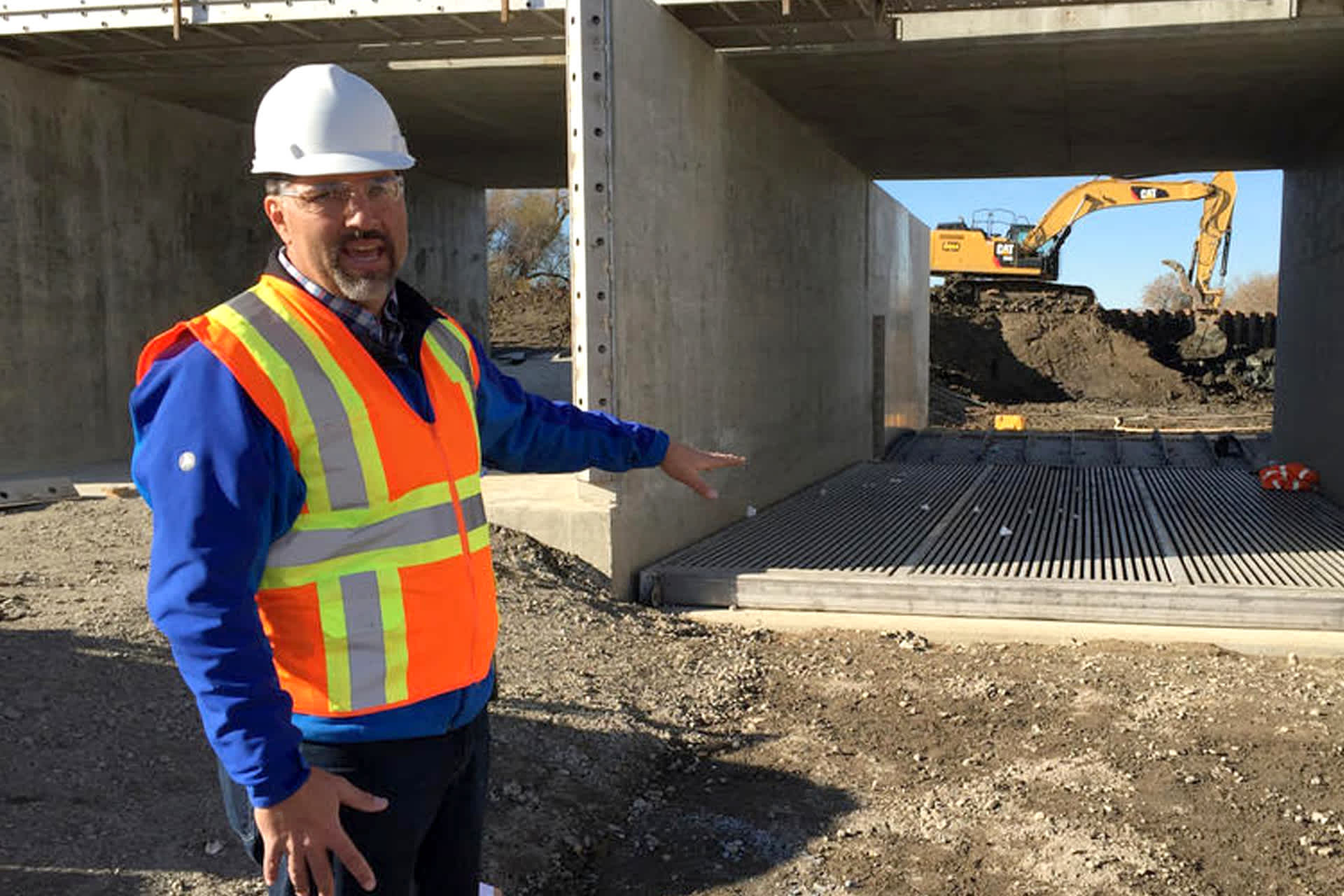A Day at Work: Water Resource Engineer

Water is one of our most important resources. Many people don’t think about where water comes from, how it gets to us, or where it goes after we use it. But water resource engineers do. It’s their job. They make sure systems and structures are in place to get water to people, animals, and crops in a way that’s efficient and sustainable.
Lewis Bair is a water resource engineer in Northern California’s Sacramento Valley. He’s responsible for a district that includes nearly 48,000 acres of farmland. Its growers depend on water from the Sacramento River Basin to produce a variety of crops. These include rice, almonds, and corn. Fruits such as melons, tomatoes, and citrus are also grown in the Sacramento Valley. The crops are shipped all over the country and around the world. Your Hot Job spoke with Bair to learn about his work.
Getting Started
Farmers start the day early. Since it’s Bair’s job to make sure farmers have enough water, he starts early too. When he arrives at the office, he’s greeted by RD, the office cat. He answers a few emails before his first meeting. Today, he’s meeting with a construction crew at 8 a.m.
Busy Morning
Bair and a construction crew are working on a big project focused on canals and gates, or turnouts. (His district has 130 miles of canals and 650 turnouts. The flow of water to farms is controlled by way of canals and turnouts.) The goal is to install an automated system that sends data to Bair and his team, as well as to farmers, telling them how much water is being used. The data also tells them how much more water is needed to keep crops growing well. On this project, each existing turnout has to be dug up. Then a new gate is installed, with a measurement box that can send data to a computer. The budget is $2 million. It’s Bair’s job to make sure the team stays on budget and on schedule.

After the meeting, it’s time to hit the road. Bair drives to a few of the turnout sites to check the crew’s progress. He inspects the turnouts to ensure proper installation. He needs to make sure the job is being done well.
Lunchtime
Bair heads back to the office for lunch. He often uses his break to catch up on paperwork. Depending on the project, he may write reports, go over budgets, order construction supplies, or answer emails. Sometimes, RD curls up on his lap for a midday snooze.
Back to Business
Bair meets with coworkers in the afternoon. They discuss water levels in the reservoirs. They check to see how much water is available to release to farmers. A few years ago, California had a severe drought. Six hundred square miles of Sacramento Valley farmland had to be left fallow, or unplanted. There wasn’t enough water to grow all of the crops. This year, water levels look much better.

Bair spends the last hour of his workday answering emails and getting ready for an important meeting. Tomorrow, he’ll hear an update from the fishery construction crew. They’re working on a project to keep salmon from getting trapped in the Sacramento River’s flood control system as the fish swim upriver to spawn. Bair reviews the latest project designs and checks the budget. Finally, he returns a couple of phone calls. After giving RD one last belly rub, it’s 5:00. Bair is ready to go home. It’s been a full day.

